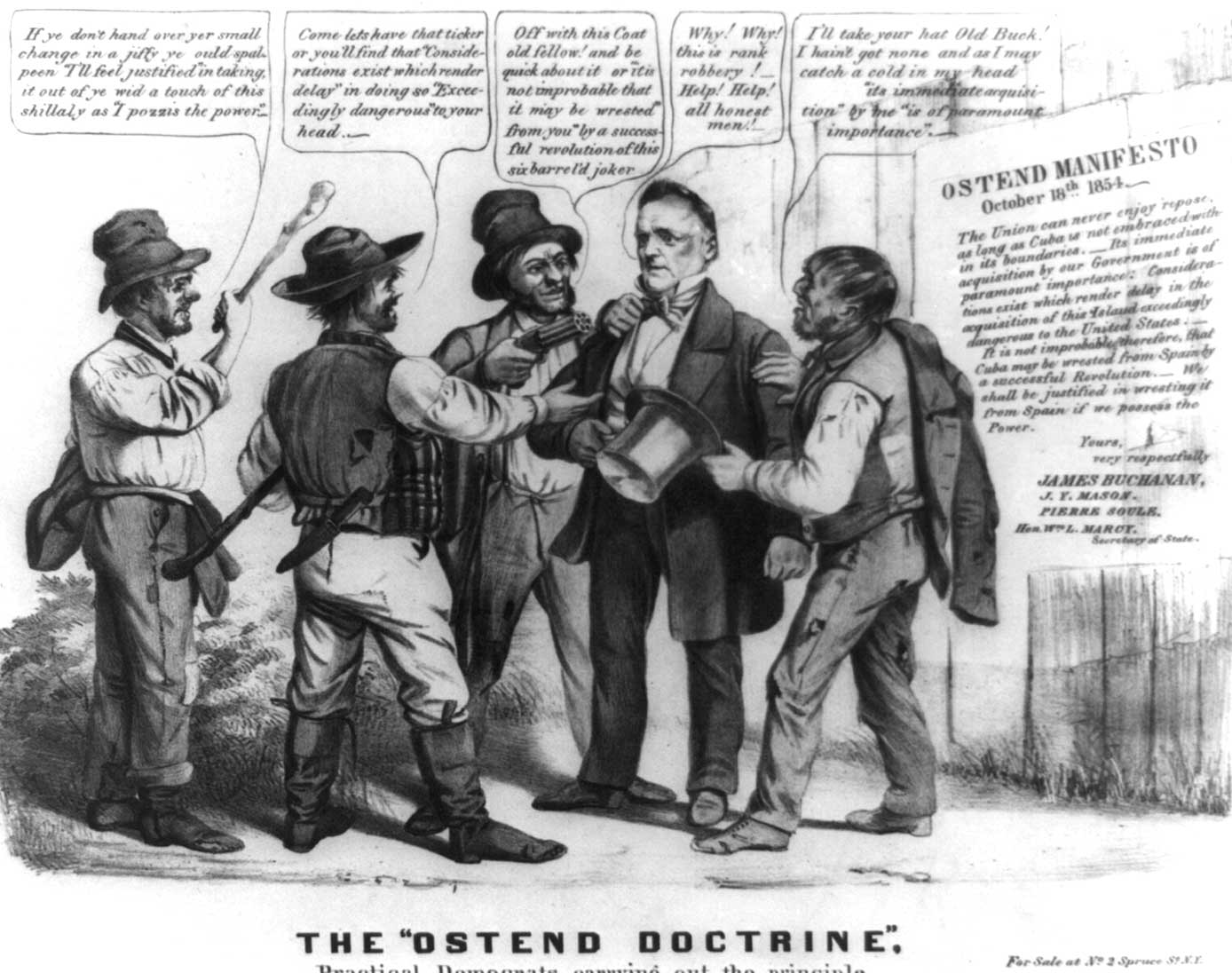
Caricture from the time
President Pierce attempted to purchase Cuba from Spain. Pierce instructed his representatives to take whatever actions needed to accomplish this goal, even if it meant going to war. When the document in which he stated these plans (The Ostend Manifesto) was leaked to the press, Pierce refuted the policy.
Seizure of Cuba, with its sugar plantations and slaves, was a prime goal of the South. They felt that adding Cuba, divided into a few states, would restore the balance between slave and free states. President Polk had already offered $100 million for Cuba, but the Spanish had responded that they preferred to see it sunk rather than sell it to the United States.
In 1850 and 1851, the South sent two expeditions to Cuba to foment revolution. Both were unsuccessful. The second ended with the death of many of those who were sent.
In 1854, Spanish officials seized an American steamer called "The Black Warrior." The Secretary of State then instructed the American ministers in Spain, England and France to present their recommendations for the seizure of Cuba. They met in Ostend, Belgium and urged the administration to offer $120 million for Cuba. Then, if Spain refused, they wrote, the US would be justified in seizing it. Their recommendation leaked out, and Northern opponents to the seizure had a political field day. This effectively dissuaded President Pierce from taking any action.
 >
>